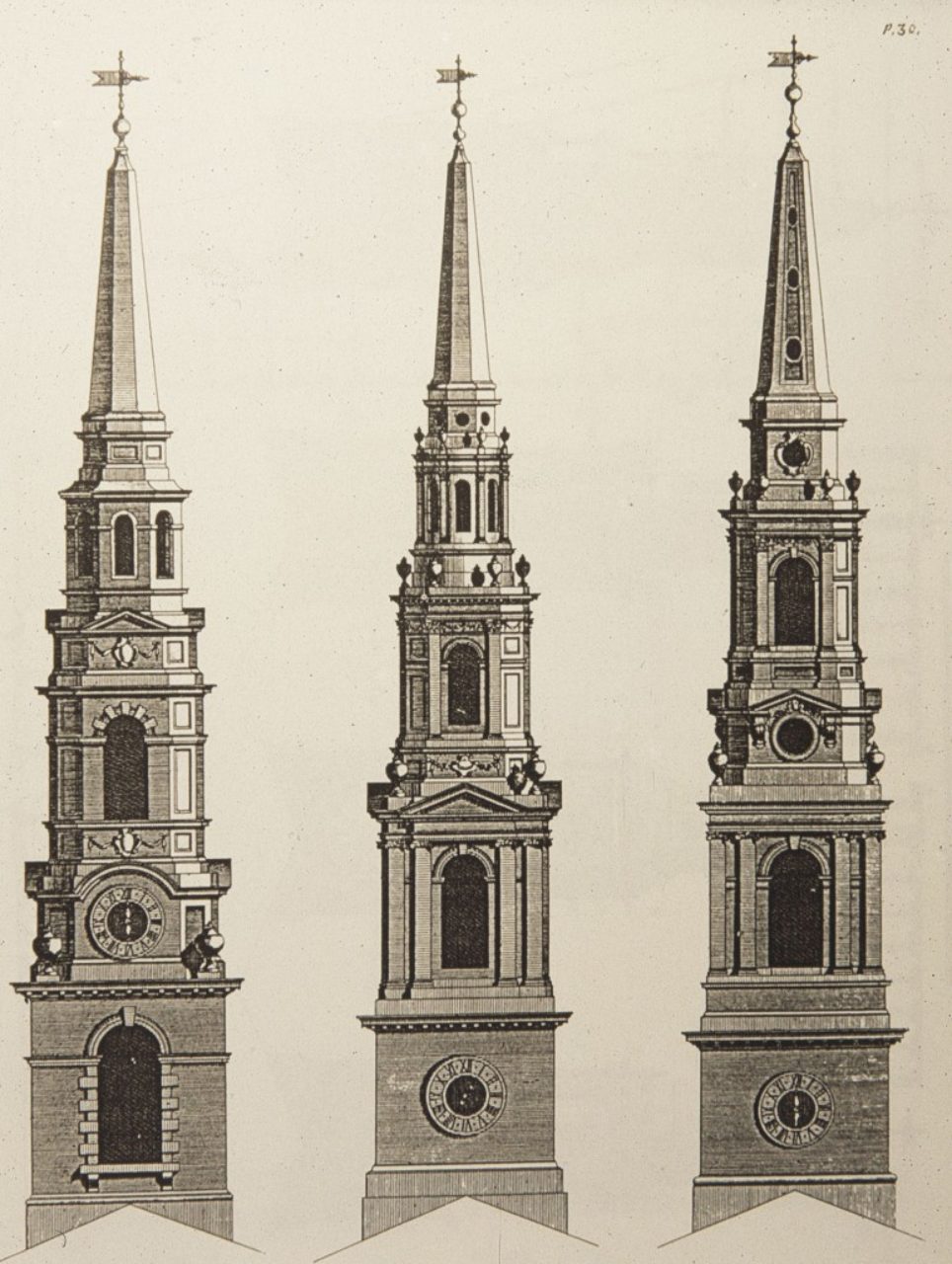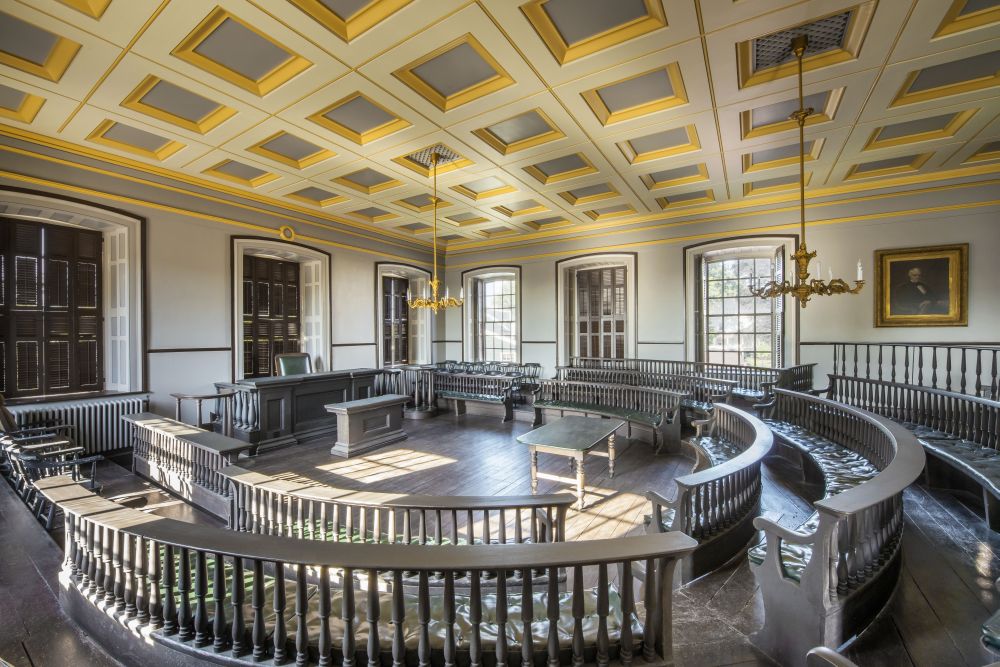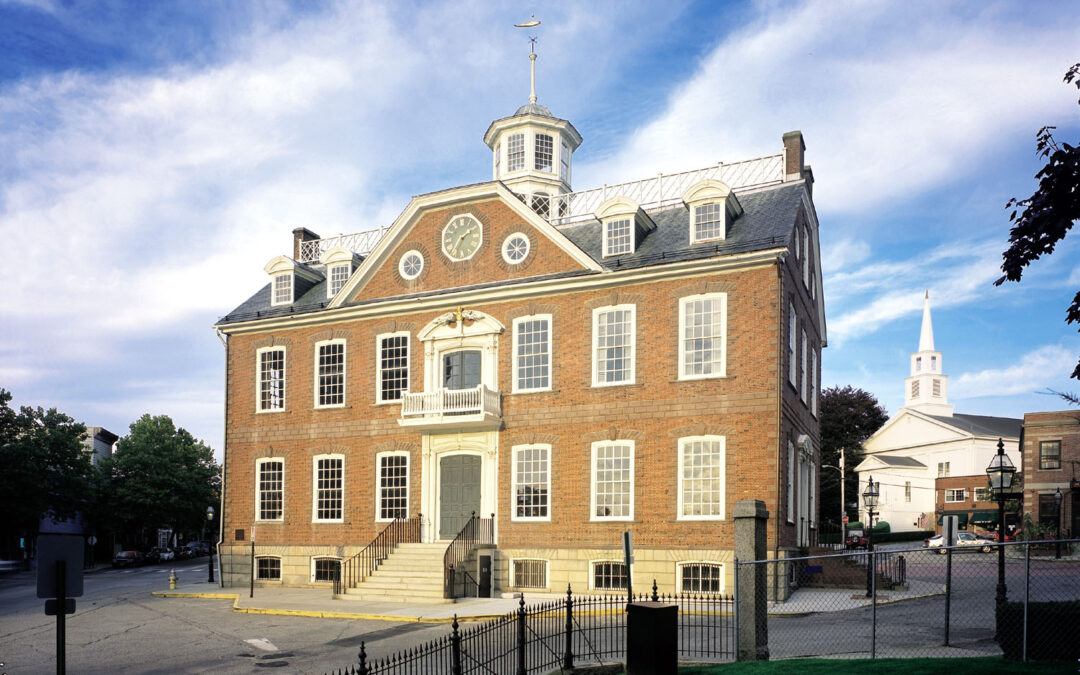Before there were architects in America, there were the great Architect-Builders. These were men who had developed drafting and building skills simultaneously through their careers and were able to apply them to the art and science of construction. Among the great Architect-Builders in Newport, Rhode Island is Richard Munday, who is often considered to be the most noteworthy and prominent of his era. Born c.1685, Munday is credited with bringing the style and philosophy of Sir Christopher Wren and James Gibbs from London to the American Colonies and applying that grand style to the architecture of the early colonial seaport of Newport.
His first great work in the city of Newport is Trinity Church, the first part of which was designed in 1725. Many architectural historians, including Antoinette Downing and Yale professor Vincent Scully, identified Munday as the individual who was largely responsible for first bringing high Baroque style to Newport by entitling the fourth chapter of their Magnum Opus The Architectural Heritage of Newport, Rhode Island 1640-1915 (Harvard Univ. Press: 1952) “Richard Munday’s Era.”

The design of the exterior of Trinity Church seems strongly modeled upon James Gibb’s St. Martin in the Fields Church and St. Mary-le-Strand in London, with their soaring multi-tiered spires above the entries. When the body of the church was built, Munday was most likely working from second-hand models seen in books and perhaps a visit to far off Boston. The elaborate tower seems to be a later feature drawn from Gibb’s Book of Architecture published in 1728 and which would have found its way to the colonies soon after. The interior however, with its great vaults projecting from the piers supporting the balconies, seems to relate more to the nautical architecture of ships that would have been familiar to builders like Munday living in the 18th century in a seaport town like Newport than the masonry of the models. Scully and Downing observe that the triple “wine glass” pulpit at Trinity are unique in that they are located in line with the central aisle of the church and obscure the visibility of the altar. Part of this is because the church was expanded by two bays in the 1762 as the congregation continued to grow and flourish. The Trinity Church was made a National Historic Landmark in 1968.

The other primary structure that Munday is noteworthy for designing was the Old Colony House, designed and built in 1739. Unlike most Newport structures of that era, it was not clad in cedar clapboard or shingle but in brick with red sandstone at the corners of the building emulating the heavy rustication of Jacobian Style buildings of the English Baroque era. Newport was not an area rich in the clay necessary to fashion brick as was the case elsewhere along the Atlantic seacoast, and so the brick needed to be imported marking the special and civic character of the structure.
The building also had features of the mid-Georgian style, including a decorative balustrade at the top of the building, arched top dormer windows on the third level of the structure and broken pediment decorative surrounds on the south, east, and west entrances into the building. While derivative of different styles, the Colony House was an innovative and original building that served as a functional and active seat for the Rhode Island government, until 1901 when the operation of the Legislature moved into the newly constructed McKim, Mead & White building in Providence on a full time basis. The second level meeting room holds a priceless, larger than life, 18th century portrait of George Washington by Rhode Island master portraitist Gilbert Stuart. The legislature room with its curved seating facing a central table and desk is intake from its early use and served as the perfect period setting for the court scenes of the powerful Spielberg movie “Amistad,” and indeed Washington Square where the Colony House is situated was transformed into the Colonial setting of New Haven, Connecticut (where the original trial took place) as it was the most intact Colonial setting in America that the film makers could find at that time. The Colony House was made into a National Historic Landmark on Oct. 9th, 1960, among the first structures in the United States to receive such a designation.

Richard Munday is also credited with the design of the Sabbatarian Meeting House on Touro Street, which is now home to the Newport Historical Society, and is believed to have been a contributor of several other noteworthy houses, some extent and others lost to fire or demolition. These include the Malbone Castle and Estate, said to have resembled the Old Colony House in character and the Daniel Ayrault House (1739-40).
In those days, being a builder was not sufficient to provide a living. It is believed that he took payment for his work of Trinity Church in the form of a family pew, which were purchased and permanently reserved during the early days of the church and part of the proof of his work on the Old Colony House came from applications from his widow for unpaid debts on that project following his premature passing.
Little of Munday’s life is known beyond his contribution to the landmark structures he helped design and oversee the building of. He was married to Martha Simons in 1713, renewed a license to keep a tavern in 1719 and named himself a “house carpenter” on a deed to a purchase a house in 1721. At the date of his passing in 1740 he was probably only about 55 years of age, cutting short his career just when many architects are just coming into the richest and most productive periods of their working lives. But fortunately, in his buildings, the soul of Richard Munday and his vision of architecture continue to resonate to the present day and hopefully long into the future as well.
Join the Architectural Forum to stay up-to-date with architectural news from Rhode Island and abroad.
Ross Sinclair Cann, AIA is an historian, educator and practicing architect living and working in Newport for A4 Architecture He holds architectural degrees from Yale, Cambridge and Columbia Universities and is a member of a numerous committees, commissions, and boards.
